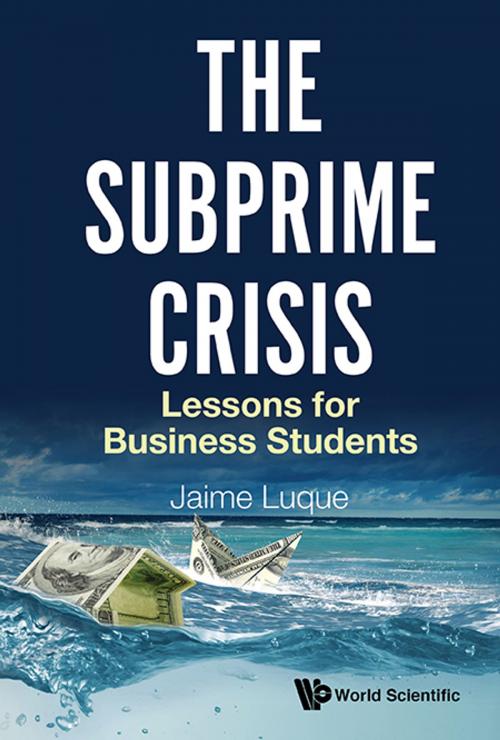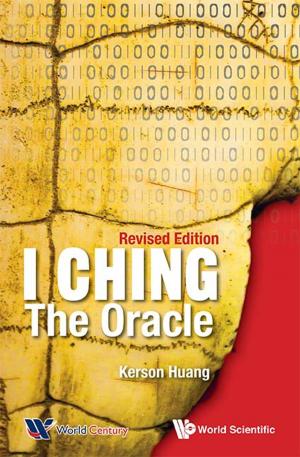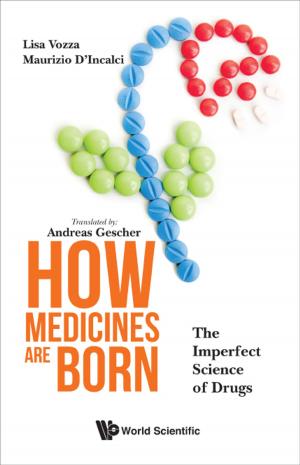The Subprime Crisis
Lessons for Business Students
Business & Finance, Finance & Investing, Banks & Banking, Finance| Author: | Jaime Luque | ISBN: | 9789813200050 |
| Publisher: | World Scientific Publishing Company | Publication: | February 16, 2017 |
| Imprint: | WSPC | Language: | English |
| Author: | Jaime Luque |
| ISBN: | 9789813200050 |
| Publisher: | World Scientific Publishing Company |
| Publication: | February 16, 2017 |
| Imprint: | WSPC |
| Language: | English |
The first major global economic contraction of the 21st century, or the "Great Recession", as it is more commonly known, began in December of 2007, and would prove to be one of the most catastrophic economic events in postmodern history. The bursting of the American housing bubble and the subprime mortgage crisis that followed are widely attributed as being the primary causes for this economic downturn.
The content of this book presents an in-depth analysis of several of the leading causes of the subprime crisis, as well as the subsequent measures that were used to contain a widespread economic recession. It is the aim of this book to provide adequate information and tools for readers to gain insight on how we can prevent the same mistakes from happening again. This analysis also explores an interesting question when considering public policy; was the economic disaster, that ensued, caused by overzealous consumers who borrowed more than they could afford, or was it caused by institutional entities that gambled away the American economy?
Contents:
-
Preface
-
About the Editor
-
Overview of the Subprime Mortgage Crisis:
- Understanding the Subprime Crisis
- What Caused the Subprime Crisis?
- Mortgage Credit Expansion
- Household Consumption
- Judicial Requirements for Foreclosures
- Political Economy During the Bust
- REITs
- US Homeownership Rates
-
Foreclosures:
- Estimates and Sources of Price Declines
- Credit Experiences
- Forced Sales and House Prices
- Contagion in Housing Markets
- Supply or Disamentity?
- Post-foreclosure Experiences
- Foreclosure Externalities
-
Government Intervention:
- The Role of the Affordable Housing Goals
- The Fed's MBS Mortgage Program
- Supply of Mortgage Credit
- The Home Affordable Modification Program
-
House Prices and Lending Standards:
- Home Equity-Based Borrowing
- Housing Prices During the Boom
- Lending Standards
- Lax Screening
-
Bibliography
-
Index
Readership: Undergraduate students in business schools. MBA students could also utilize this text as an introductory reading material to the history of the Great Recession.
Key Features:
- Contains multiple choice questions and answers, alongside further reading
- Written for students with minimal current affairs knowledge of the subprime crisis and the 2009 Great Recession
- The answers to the multiple choice questions are also accompanied by explanations
The first major global economic contraction of the 21st century, or the "Great Recession", as it is more commonly known, began in December of 2007, and would prove to be one of the most catastrophic economic events in postmodern history. The bursting of the American housing bubble and the subprime mortgage crisis that followed are widely attributed as being the primary causes for this economic downturn.
The content of this book presents an in-depth analysis of several of the leading causes of the subprime crisis, as well as the subsequent measures that were used to contain a widespread economic recession. It is the aim of this book to provide adequate information and tools for readers to gain insight on how we can prevent the same mistakes from happening again. This analysis also explores an interesting question when considering public policy; was the economic disaster, that ensued, caused by overzealous consumers who borrowed more than they could afford, or was it caused by institutional entities that gambled away the American economy?
Contents:
-
Preface
-
About the Editor
-
Overview of the Subprime Mortgage Crisis:
- Understanding the Subprime Crisis
- What Caused the Subprime Crisis?
- Mortgage Credit Expansion
- Household Consumption
- Judicial Requirements for Foreclosures
- Political Economy During the Bust
- REITs
- US Homeownership Rates
-
Foreclosures:
- Estimates and Sources of Price Declines
- Credit Experiences
- Forced Sales and House Prices
- Contagion in Housing Markets
- Supply or Disamentity?
- Post-foreclosure Experiences
- Foreclosure Externalities
-
Government Intervention:
- The Role of the Affordable Housing Goals
- The Fed's MBS Mortgage Program
- Supply of Mortgage Credit
- The Home Affordable Modification Program
-
House Prices and Lending Standards:
- Home Equity-Based Borrowing
- Housing Prices During the Boom
- Lending Standards
- Lax Screening
-
Bibliography
-
Index
Readership: Undergraduate students in business schools. MBA students could also utilize this text as an introductory reading material to the history of the Great Recession.
Key Features:
- Contains multiple choice questions and answers, alongside further reading
- Written for students with minimal current affairs knowledge of the subprime crisis and the 2009 Great Recession
- The answers to the multiple choice questions are also accompanied by explanations















